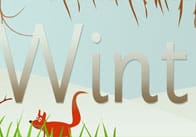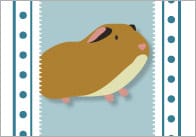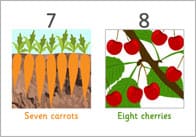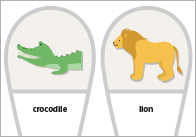Fun Spring Activities For Children

Spring is a magical time for children to observe / explore nature and learn about the world around them. As winter loosens its grip, the world stirs with new life – buds unfurl, birdsong returns, and the air carries the promise of warmth. There’s a vibrancy to the new foliage and the sun sits higher in the sky, lengthening the days and creating dappled patterns through budding trees.
To make the most of this wonderful time of year, we’ve put together a list of activities that are perfect to do with young children. They are full of learning opportunities and will promote an appreciation of the natural world.
1. Go on a nature walk with flower identification
Take children on a gentle nature walk and encourage them to observe different plants and flowers. Give them a printable checklist featuring common spring flowers such as daffodils, bluebells, tulips, and primroses. As they walk through gardens, parks, or woodlands, they can tick off each flower they find.

Download our Spring Plant & Flower Hunt Activity Sheet here – a ready-made printable ideal for this purpose.
If you’re looking for a digital twist, apps like PlantNet and Seek by iNaturalist allow children to take pictures of flowers and get instant identification results.
It’s a good idea to ask questions to encourage curiosity and critical thinking about the plants and flowers.
For instance you could ask:
- Can you find a flower that is just starting to open? What do you think will happen next?
- Can you spot any tiny new leaves on the trees? How do they feel?
- Which plants are the tallest? Which ones are the smallest?
- Look at the buds on the branches—what do you think is inside them?
- How do you think this flower got here? Did someone plant it, or did it grow by itself?
- What do you think this plant will look like in a few weeks? How will it change?
- Can you find two leaves that feel different from each other? How are they different?
- Can you find two different kinds of trees? How are they the same? How are they different?
- Do all the flowers have the same number of petals? Let’s count them!
- If you were a plant, would you rather be a tall tree or a tiny flower? Why?
- If you were a tiny bug, which plant would you like to live on? Why?
2. Sensory scavenger hunt
Use our Outdoor Treasure Hunt Cards to go on a sensory expedition of a park, garden or outside space. This involves finding different items that have particular qualities – for instance something squashy, spiky, rough, smooth, bendy, crunchy etc.
These cards can be used in various ways. For example, you could shuffle the deck and give each child or group three cards. They must then race and find objects that match each card. They could take a photo of each thing that they find.
3. Weave a braided willow harlequin tree
Crafting a twisted willow harlequin tree is a really fun, creative and satisfying spring activity, that produces amazing results! You’ll need to do it while the willow is still dormant in early spring.
For this you’ll need some willow ‘whips’. For the best results you’ll need a particular type of willow – Salix Viminalis. These are relatively inexpensive to buy and are available from November to April. You’ll find them in various places online, including eBay.
Willow whips are offcuts of willow. They’re really easy to plant – you literally just poke them into the soil and they should form roots when the weather starts to warm up a bit. The ease of planting makes this project ideally suited as a gardening activity for children. Also, willow is very fast growing so you’ll start to see results very quickly. By mid summer you should have a very lush, unique looking tree that would look amazing in a pot in your garden. It would also be a great gift.
A miniature version of the harlequin willow tree below could be created for under £15. As the tree grows, you’ll want to cut it back in the autumn, winter or early spring. You can then use the cuttings to create another harlequin tree!
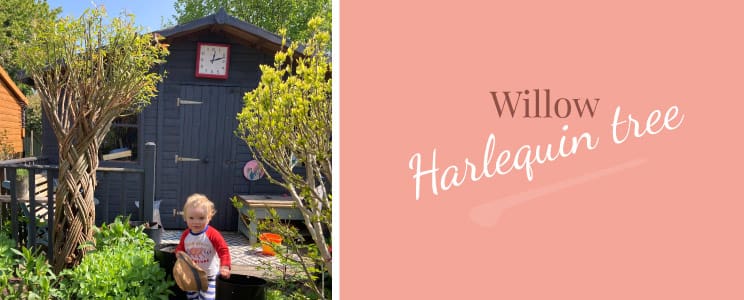
I bought the one above a couple of years ago and I was so impressed that I created another smaller one (pictured below) with my 5 year old son. He really enjoyed creating it and was really proud of the result, taking care to water it throughout the summer (willows do need a lot of water). We managed to make a few out of the willow whips that I bought so we gave them as presents to grandparents, who were really thrilled.
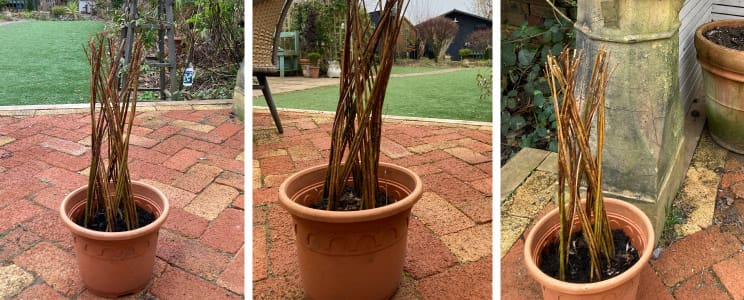
You can find a detailed instruction (including a link to a video) on how to create this here.
You could do a variation on this design and create a willow ‘umbrella tree’. If you’re feeling even more adventurous then you could also use willow to create a living arch, hut, den, walkway, even a sculpture.
4. Create a wigwam or den in the garden
Who doesn’t love a den? You could create a simple one by foraging for long sticks and branches and then arranging them in wigwam shape tied at the top with rope. You could then weave smaller branches into the structure. You could even turn it into a ‘living den’ by planting some willow whips around the perimeter and tying them loosely to the structure with twine or cable ties. The willow should take root and bush out over the summer months covering the den in lush green foliage. This can create a wonderful, cosy space for imaginative play. It will also look super cool in your garden!

5. Plant a mini garden
Another simple hands-on activity is to designate a small part of your outside space to your child / children and let them decide what to grow. This simple activity teaches them about life cycles, responsibility, and patience as they watch their plants grow.
You could suggest plants such as sunflowers, marigolds, nasturtiums, oxeye daisy, California poppy and forget-me-nots. These grow quite reliably when sown directly into the ground, so you shouldn’t need to start them off in a greenhouse or on a windowsill. You could also suggest summer flowering bulbs which can be planted in spring. These are very easy to grow. You could consider: Gladioli, Dahlias, Crocosmia, Begonias and Lilies.
Check out the Royal Horticultural Society’s Gardening for Kids resources for more planting ideas.
6. Create a bug hotel
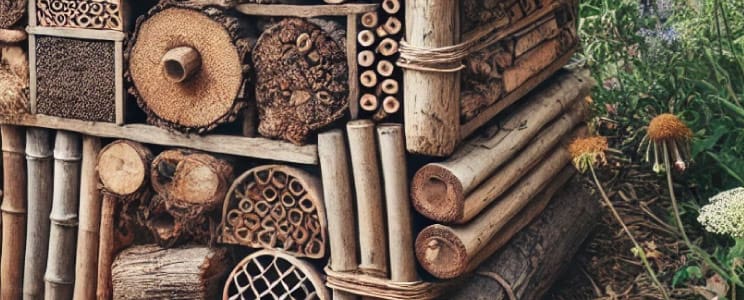
Building a bug hotel is a fantastic hands-on activity that encourages children to explore nature while helping insects / minibeasts thrive. Start by choosing a sheltered spot in the garden, preferably near flowers or shrubs. Use a wooden crate, an old box, or stack logs and bricks to form the base. Then, fill the spaces with natural materials like hollow bamboo canes, pinecones, bark, leaves, and straw—these create cosy hideouts for different bugs.
Encourage children to check the bug hotel regularly and observe any new residents, such as ladybirds, bees, or woodlice. Not only is this a fun project, but it also teaches children about biodiversity and the importance of insects in the ecosystem! You could also get the child / children to create a sign for your bug hotel.
7. Flower pressing & art creations
Collect fallen petals and leaves during a walk, then press them between the pages of a heavy book. Once dried, they can be used for crafts like bookmarks, collages, or cards – a fantastic way to combine science and art!
The National History Museum has a really good guide on flower pressing that you might want to look at:
8. Make a DIY flower sensory bin
For younger children, create a sensory bin filled with petals, leaves, and twigs for a hands-on nature exploration experience. Add scoops and magnifying glasses to encourage investigation and fine motor skill development.
9. Minibeast craft ideas
Minibeast crafts are great to do in the spring. This illustrated digital download gives detailed instructions on how to do the following activities:
- Foam butterfly – Children cut a butterfly shape from foam sheets, attach a straw for antennae, and decorate with additional foam shapes.
- Spoon bug – Using air-drying clay and a plastic spoon, children create a bug shape with cotton bud legs, then paint it once dry.
- Fold-over butterflies – A simple symmetry painting activity where children fold a painted sheet of paper to create butterfly wings.
- Caterpillar eggbox – Children cut and paint egg box sections, then glue them onto a strip of card to form a caterpillar, adding wiggle eyes and pipe cleaners for antennae.
10. Minibeast leaf art
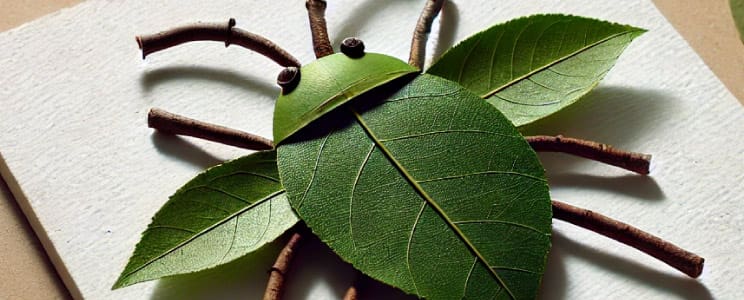
Encourage your children to design a minibeast out of leaves and other natural materials. This is a great springtime activity that combines outdoor exploration with artistic expression. Here’s a simple guide you could follow.
11. Easter egg hunt
Easter is one of the highlights of spring – unless you live in the Southern Hemisphere where Easter occurs in the autumn!
To organise a fun Easter egg hunt in a garden or outdoor space, start by choosing a safe area with plenty of hiding spots, such as behind flower pots, under benches, or in trees. Use wrapped chocolate eggs and hide them at varying levels of difficulty depending on the children’s ages. Provide each child with a basket or bag – you could get them to design their own Easter basket as a separate craft activity. Consider adding a twist by assigning each child a specific colour of egg to find, ensuring everyone gets a fair share. To add excitement and a sense of jeopardy, set a time limit or include small challenges like hopping like a bunny to the next clue.
- Alternative letter & number hunt (for readers)
For children who are learning to read or are confident readers, try a clue-based treasure hunt using cards with both letters and numbers on them. Scatter these cards around the garden. Once all the cards are found, the children must work together to arrange them in the correct numerical order. When placed correctly, the letters on the cards will form a message that reveals the location of the Easter eggs. For example the cards could say ‘under the holly tree’ or ‘behind the flowerpot’. This adds an educational element while keeping the game fun and engaging. We use this type of ‘treasure hunt’ a lot in our house, it’s a fun activity at any time of the year – especially to reward good behaviour.
12. Make some marshmallow caterpillars
This is a really simple and fun cooking activity for children. The caterpillar theme makes it idea to do in the spring time. You can find a downloadable set of instructions here.
13. Create a spring wreath

Making a spring wreath is a fun and creative activity that allows children to explore nature and develop their fine motor skills. Start by gathering materials such as bendable twigs (like willow) to form the base, along with fresh or dried flowers, leaves, ribbons, and even small decorative eggs or butterflies.
To create the wreath, shape the twigs into a circle and secure them with string or florist wire. Then, let children weave in flowers and greenery, using a glue gun or more wire to hold everything in place. For a simpler version, use a ready-made ring. You can get cardboard, metal and natural grapevine ones from places like Amazon and Hobbycraft. Attach natural elements with tape or glue. Once finished, hang the wreath on a door or wall to celebrate the arrival of spring!
Why Outdoor Learning Matters
Spending time outdoors boosts physical health, emotional well-being, and cognitive development.

Whether you’re a parent, teacher, or childminder, these simple yet engaging activities will make springtime adventures educational and memorable.
Popular Teaching Resources
Stay Up To Date
Sign up for our newsletter and we’ll let you know when we create new early years resources.

